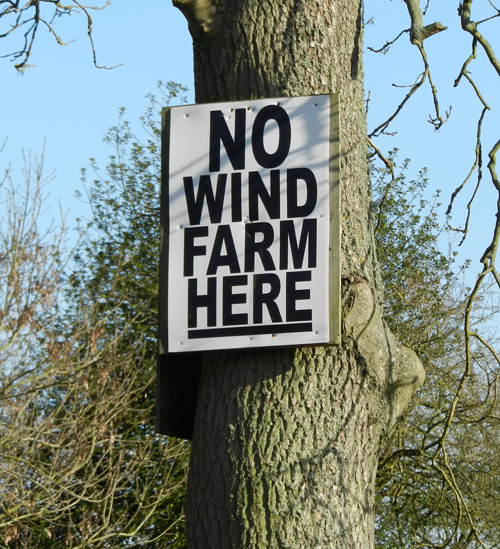Nimbyism
Nimbyism is a term referring to the propensity for people to have a 'Nimby' or 'Not In My Back Yard' attitude, where the 'yard' is an area of land that has been identified for building or development, or for the use of controversial technology. It can be used as a positive term for those who oppose development in their village or town or city, but is more commonly used in a derogatory way.
Nimbyism is an attitude often associated with small towns or rural areas which fail to identify acceptable locations for development to take place; simply hoping they will be in someone else's back yard instead.
The reason 'Nimby' is often used pejoratively is that it characterises residents who might agree that the development in question is needed in society, just that they object to its proximity to them and their homes, or that it might affect their lives in some way that they perceive to be negative.
A typical example of a project that can provoke a 'Nimby' response is an airport. Local residents may oppose airport development due to the noise, pollution and traffic that it will generate, although they (and the wider area) may stand to benefit from improved transport links, generation of new jobs, and so on. They are also likely to use, and benefit from the existence of airports themselves - but those airports are somewhere else.
Local powers such as neighbourhood planning and village green registration can be used by Nimby's to frustrate development.
The term 'Nimby' is the opposite to 'Yimby', meaning 'Yes-build In My Back Yard' for those who support the new build or development.
[edit] Related articles on Designing Buildings Wiki
- Brownfield land.
- Community rights.
- Compact sustainable city.
- Densification.
- Green belt.
- Growth and Infrastructure Act.
- Local green space.
- Local Nature Reserve.
- Location.
- National Planning Policy Framework.
- Neighbourhood planning.
- Our place.
- Property blight.
- Right to contest.
- Town planning.
- Urban sprawl.
- Village green registration.
Featured articles and news
Delivering for tenants; National Retrofit Hub
New report offers recommendations to strengthen energy efficiency standards to protect private renters.
Government consultations for the summer of 2025
A year of Labour, past and present consultations on the environment, the built environment, training and tax.
CMA competitiveness probe of major housing developers
100 million affordable housing contributions committed with further consultation published.
Homes England supports Greencore Homes
42 new build affordable sustainable homes in Oxfordshire.
Zero carbon social housing: unlocking brownfield potential
Seven ZEDpod strategies for brownfield housing success.
CIOB report; a blueprint for SDGs and the built environment
Pairing the Sustainable Development Goals with projects.
Types, tests, standards and fires relating to external cladding
Brief descriptions with an extensive list of fires for review.
Latest Build UK Building Safety Regime explainer published
Key elements in one short, now updated document.
UKGBC launch the UK Climate Resilience Roadmap
First guidance of its kind on direct climate impacts for the built environment and how it can adapt.
CLC Health, Safety and Wellbeing Strategy 2025
Launched by the Minister for Industry to look at fatalities on site, improving mental health and other issues.
One of the most impressive Victorian architects. Book review.
Common Assessment Standard now with building safety
New CAS update now includes mandatory building safety questions.
RTPI leader to become new CIOB Chief Executive Officer
Dr Victoria Hills MRTPI, FICE to take over after Caroline Gumble’s departure.
Social and affordable housing, a long term plan for delivery
The “Delivering a Decade of Renewal for Social and Affordable Housing” strategy sets out future path.
A change to adoptive architecture
Effects of global weather warming on architectural detailing, material choice and human interaction.
The proposed publicly owned and backed subsidiary of Homes England, to facilitate new homes.
How big is the problem and what can we do to mitigate the effects?
Overheating guidance and tools for building designers
A number of cool guides to help with the heat.
The UK's Modern Industrial Strategy: A 10 year plan
Previous consultation criticism, current key elements and general support with some persisting reservations.
Building Safety Regulator reforms
New roles, new staff and a new fast track service pave the way for a single construction regulator.


























